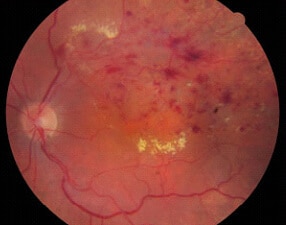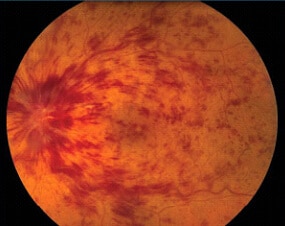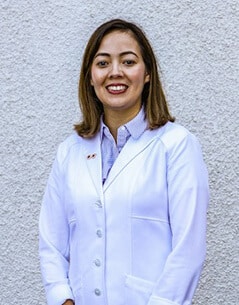What is Retinal Vein Occlusion?
Retinal Vein Occlusion (RVO) is the second most common retinal vascular disorder after diabetic retinopathy. Though it can affect both eyes, it usually presents with acute, unilateral, painless vision loss – or, more simply put – it’s more common in one eye only. In milder, non-central cases, patients may show no symptoms. Vision loss typically occurs from compromised blood flow and swelling in the macula, the retina’s central portion responsible for critical visual tasks such as reading and recognizing faces. Left untreated, RVO can lead to glaucoma and severe visual impairment.
Schedule a Consultation
Want to learn more about Retinal Vascular Occlusion? Click the button below to request an appointment today.
Request an AppointmentWhat are the Types of Retinal Vein Occlusion?
Branch Retinal Vein Occlusion (BRVO)
Branch retinal vein occlusion (BRVO) is the blockage of one of the smaller branch veins.

Central Retinal Vein Occlusion (CRVO)
Central retinal vein occlusion (CRVO) is the blockage of one of the smaller branch veins.

How is Retinal Vein Occlusion Treated?
Treatments for RVO at Desert Retina Consultants include:
- Annual vision monitoring with dilated eye exams
- Laser treatments
- Intra-vitreal injections – Anti-VEGF (vascular endothelial growth factor) drugs into the vitreous cavity (retina location) can be a highly effective treatment for retinal vein occlusion. Anti-VEGF drugs stop the growth of new blood vessels in the eye. Most patients require a series of injections, so they require periodic monitoring to evaluate when additional treatments with anti-VEGF agents are needed.









